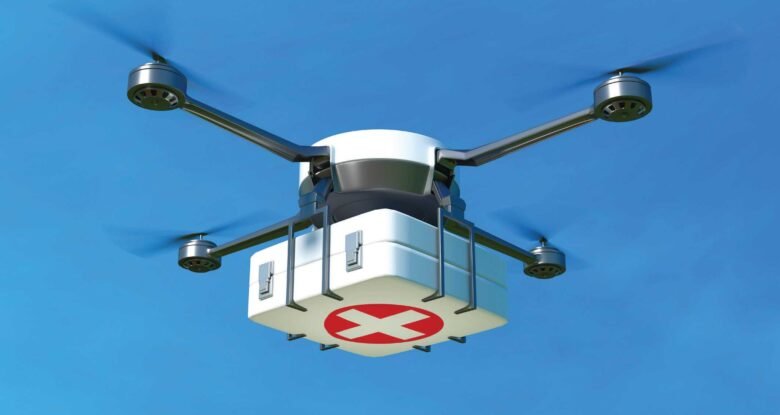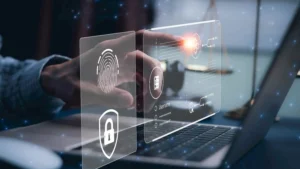Recently, drones have evolved from hobby toys to indispensable industrial tools. Unmanned aerial vehicles (UAVs) can fly without a pilot. Sectors such as photography, agriculture, construction, surveillance, and logistics all use drones, controlled remotely or with independent software. Drones play their most transformative role in delivery and emergency services. Drones can quickly deliver goods and aid to remote areas and difficult terrain, saving time and lives.
Benefits of Drone Delivery Systems
The primary advantage of drone delivery is speed. Drones can fly in a straight line and are faster than ground vehicles. This improves delivery efficiency and reduces costs for businesses. Most drones consume energy and emit no emissions, making them environmentally friendly. Convenience is another advantage. Drones can reach areas affected by floods, landslides, and other disasters inaccessible to conventional transport. Their aerial transport method makes them ideal for critical goods such as first aid kits, food, and vaccinations. Drone delivery is crucial during global health crises like the COVID-19 pandemic because it eliminates human interaction.
The Role of Drones in Medical Emergencies
The ability of drones to quickly transport critical medical supplies has made them increasingly important in healthcare. In many countries, especially developing nations with weak infrastructure, drones deliver blood samples, vaccinations, and life-saving medications. Zipline’s medical delivery drones have transformed rural healthcare in Rwanda and Ghana. These drones can deliver blood or vaccines to remote clinics in minutes, eliminating heavy traffic. In cases of cardiac emergencies, drones can deliver defibrillators to emergency responders, increasing survival rates. Drones save lives and accelerate emergency response by addressing bottlenecks in healthcare logistics.
Disaster Management and Rescue with Drones
Access to areas affected by natural disasters is often limited or completely blocked. Drones’ rapid situational awareness and ability to deliver supplies are invaluable in these situations. They can accurately map affected areas, assess the damage, and direct rescue efforts. Thermal imaging drones can locate survivors under the rubble, while aircraft equipped with loudspeakers can reach isolated survivors. Humanitarian organizations use drones to deliver food, water, and medicine to areas inaccessible to aircraft. Drones accelerate disaster relief efforts and reduce the risk of rescue workers entering dangerous locations.
The Impact of Drones on Law Enforcement
Police use drones to enhance public safety and emergency response. Drones can be used for search and rescue operations, aerial surveillance, and monitoring traffic accidents during large-scale events. Drones can provide investigators with high-resolution photos and videos of crime scenes and disaster zones. Police drones can guide evacuation routes and deliver essential supplies during natural disasters. Their high speed and low noise levels make drones highly effective in disaster prevention and response. Law enforcement can use drones to make faster, more informed decisions, thus protecting communities.
Drone Integration Issues
Drones offer many advantages, but integrating them into delivery and emergency services is challenging. Safety is a key concern. Because drones fly in public airspace, they can collide with other aircraft, buildings, and power lines. Privacy is another concern, as drones with cameras can capture private data without permission. Regulations also hinder the widespread adoption of drones. Many countries are still developing regulations for drone flights, especially in densely populated areas. Drone batteries limit their range and lifespan, making deliveries over long distances or with heavy payloads difficult. We need more advanced battery technology, air traffic control systems, and global drone safety regulations to address these issues.
The Future of Drones in Delivery and Emergency Services
The future of drone technology looks bright. Improved battery life and autonomous navigation enable drones to transport larger loads over longer distances. Future drone delivery networks have the potential to reduce traffic congestion and promote more environmentally friendly urban mobility. Drones with artificial intelligence (AI) will help emergency services make faster decisions and automate disaster response. Drones are likely to connect to 5G and the Internet of Things, enabling real-time data sharing and smarter collaboration on the ground and in the air. The speed, efficiency, and convenience of drones make them one of the most transformative technologies of the 21st century.
Conclusion
Drones are transforming global delivery and emergency services. Their speed, agility, and safety in hazardous environments make them essential for modern logistics and crisis response. Drones improve the speed and efficiency of delivering packages in crowded cities or medical supplies in remote areas. They save lives in emergencies by providing real-time data and delivering essential goods faster than any other technology. While regulatory, safety, and privacy concerns remain, technological advancements are paving the way for drones to play an even greater role in our daily lives in the future. Drone technology not only makes the world more convenient, safer, and faster but also more connected.
FAQs
1. How can drones improve delivery services?
Drone deliveries can save time, avoid traffic jams, and quickly reach remote or inaccessible areas.
2. Are drones suitable for medical emergencies?
Drone deliveries of blood, vaccines, and defibrillators in rural and disaster-stricken areas are common practice.
3. Are drones environmentally friendly?
Most drones are electric, making them more environmentally friendly than fossil fuel vehicles.
4. What challenges do delivery and emergency services face with drones?
Limited battery life, regulatory restrictions, privacy concerns, and threats to airspace security are all challenges.
5. What is the future of drone technology?
Drone technology promises improved battery efficiency, autonomous navigation, AI-driven emergency response systems, and broad applications in urban and rural logistics.




